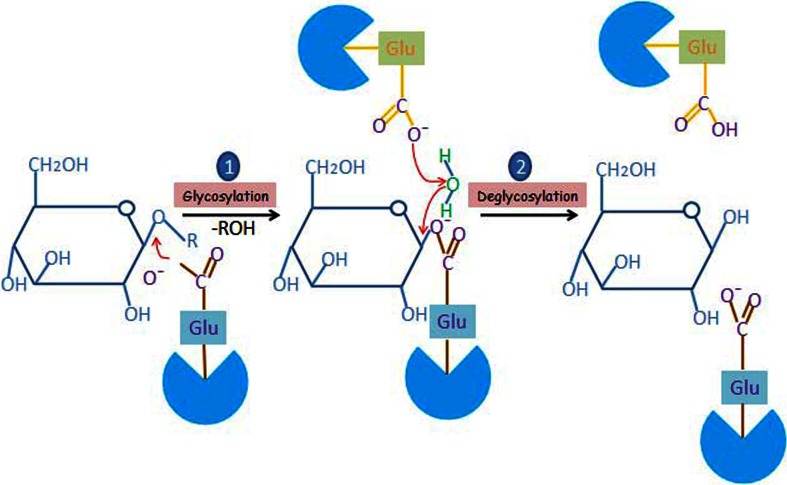Fig. 2.
Proposed “retaining” mechanism for hydrolysis of β-glycosidic bond by β-glucosidase: (1) during first glycosylation step, a conserved glutamate residue acts as nucleophile and attacks on the glycosidic bonds or cellobiose and other oligosaccharides formed by the hydrolytic action of other enzyme of cellulase system. This results into the formation of an enzyme-substrate intermediate complex, (2) during second step called deglycosylation, an another conserved glutamate residue activates a water molecule present in the proximity by general acid/base catalyst reaction and now this activated water molecule acts on the intermediate complex to release the free glucose residue

